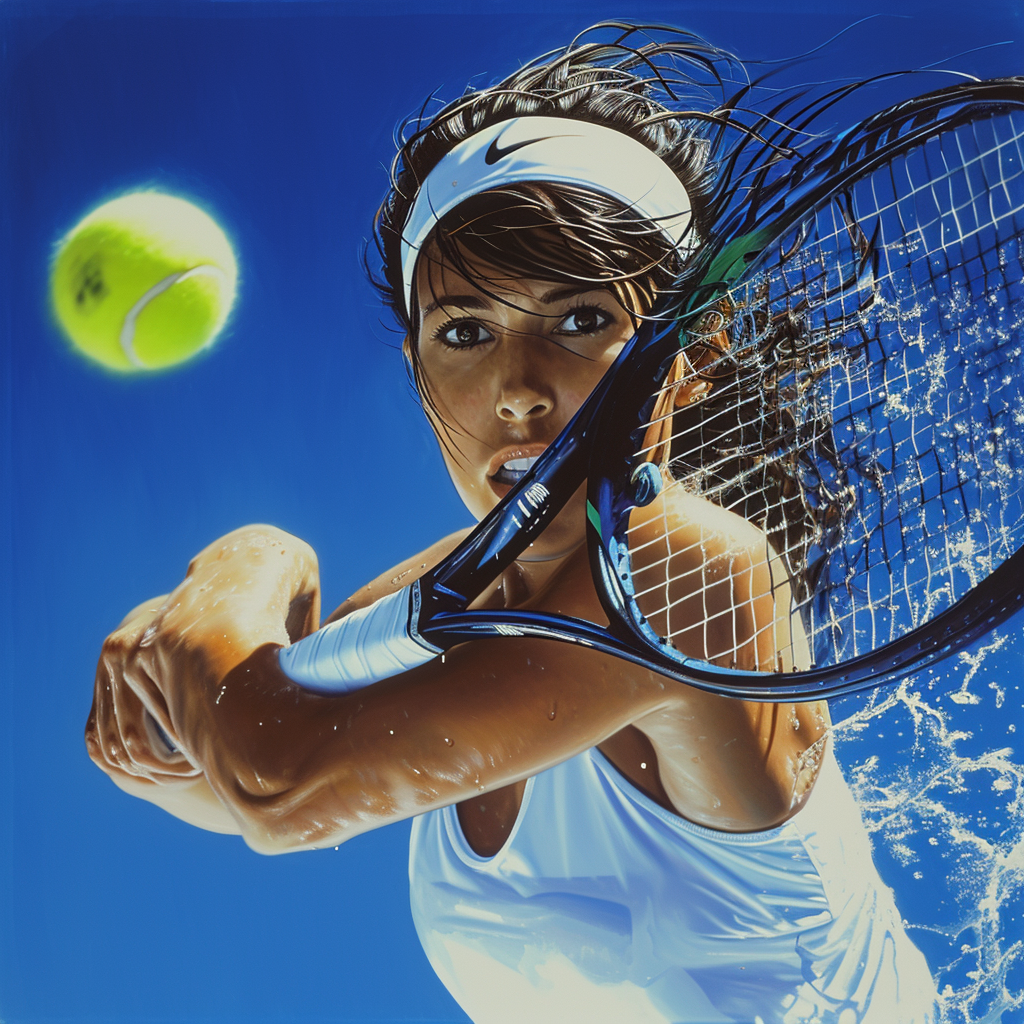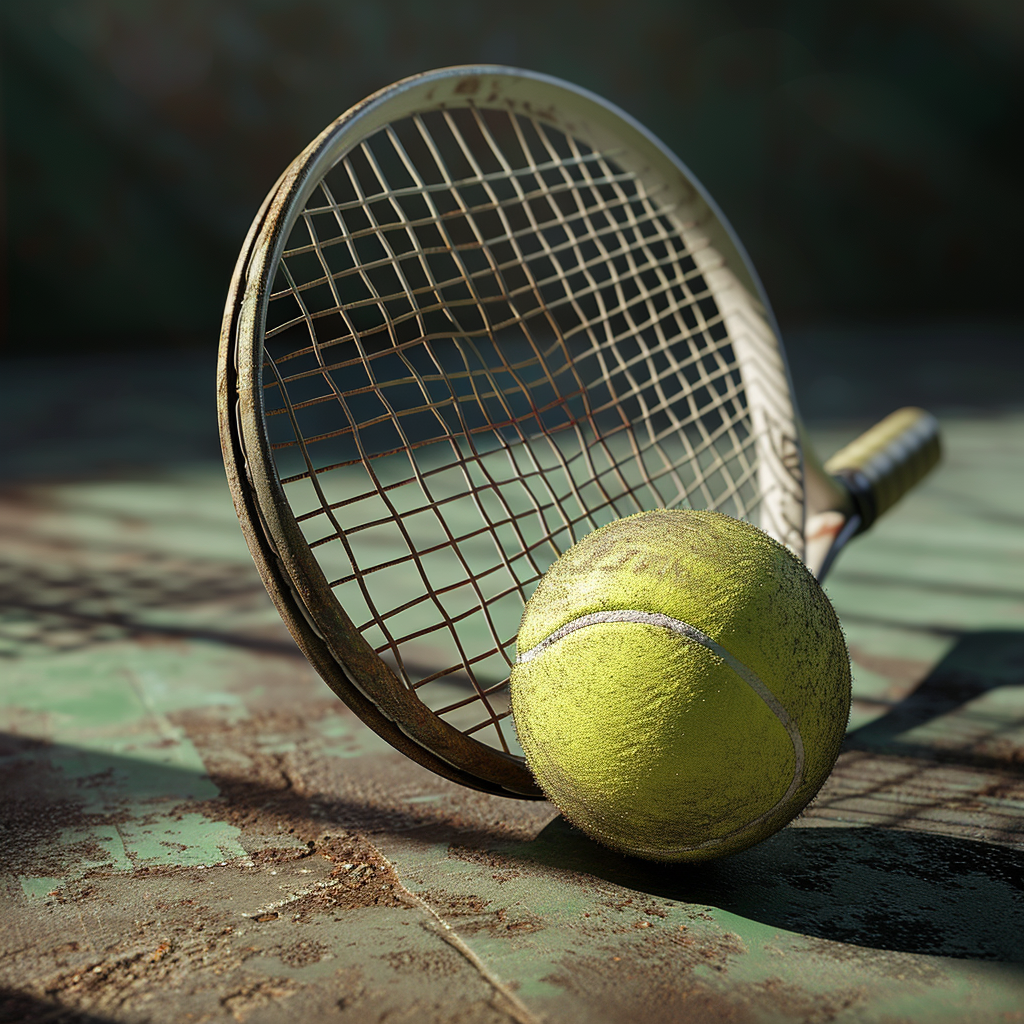How to choose a tennis racket?
So, how do you choose a tennis racket? If you play tennis, you've probably asked yourself this question. According to Google Search data, the most frequent questions on the topic are:
- How to choose tennis racket size
- Tennis racket selection, best power tennis racquet
- Tennis racket weight
- Tennis racket balance
- How to know what tennis racket to buy, how to pick out a tennis racket, what to consider when buying a tennis racket, how to choose the best tennis racket, how to pick a tennis racket beginner, or tennis racket selection guide
- Tennis racket handle size, Tennis racket features, Tennis racket advice, tennis racket tips, Tennis racket evolution, Tennis racket sensor or tennis sensor
- Types of tennis rackets and (finally:) how to measure vibrations
These are just the main keywords, but they already give us an idea of the most considered aspects by players. In addition to those specific queries, we've found that most people also search for answers regarding:
- Tennis elbow, wrist pain, overgrips, grip types, tennis racket grips, tennis racket strings, impact zone, balance point, tennis racket dampener, vibration dampening
Choosing one type of tennis racket over another is not as intuitive as one might think. In addition to quantifiable parameters, additional variables, such as vibration frequency, can guide us toward a particular model, even if, at first glance, it looks the same as another.
Important selection criteria
Historically, the choice of tennis equipment has been determined by subjective factors, from the feeling of holding the racket to the tactile experience at the moment of impact with the ball. A significant role is also played by the design, including the color and overall appearance of the racket —and to this is added, without any doubt, the subjective perception of the brand that produces it.
 Midjourney Art (prompt: "tennis and vibrations")
Midjourney Art (prompt: "tennis and vibrations")
Field practice.
Field practice shows us that intangible and delicate factors influence our choice between seemingly identical tools and tangible aspects. As technical experts, we must ask ourselves if there are quantifiable aspects that can explain a differentiated performance in terms of behavior beyond physical parameters such as weight (W-g), balance (bal-mm), moments of inertia (SwW-SpW-TwW-RcWkgcmq), polarization index (pol. index) and static rigidity (RA-kg/mm) of the handle. If they exist, what are these factors? If they do not exist, could it be that our perceptions are solely linked to psychological factors?
 Midjourney Art (prompt: "tennis and vibrations")
Midjourney Art (prompt: "tennis and vibrations")
Can the racket be equated to a tuning fork?
There is likely a coexistence of physical and mental aspects; therefore, our strategy for addressing the problem will consider both quantifiable and non-quantifiable factors associated with the psychological field. We will start by analyzing the physical data, which I refer to as "second-level" data, that is, those that require a detailed understanding of the tool in use, given that they are linked to measurement activities.
The physics of the tennis racket
The first element is the dynamic rigidity of the frame, which refers to the frame's resistance measured in real-game situations. This type of rigidity is evaluated by observing the characteristic vibration frequencies of the racket at the moment of impact with the ball. This contrasts with static rigidity, which is determined using an apparatus that measures how much the shaft can bend when subjected to flexion. To better understand this concept, we can compare our racket to a tuning fork (an instrument used in music for tuning).
 Midjourney Art (prompt: "tennis and vibrations")
Midjourney Art (prompt: "tennis and vibrations")
Every time we hit a ball with the racket, the latter vibrates in our hands at a particular frequency. It bends like a flexible and constrained rod, communicating to our body through hand, wrist, and arm, vibrations that transmit information through subconscious language. In fact, by analyzing the vibration frequency, we can obtain data that our brain interprets since the energy released by the contact produces a perception of greater or lesser energy, which has different consequences for the protection of the joints. These consequences vary from individual to individual, depending on their physical constitution and their personal resonance frequencies.
At the same time, the way it vibrates transmits information to us in the form of a "wave train" about the perceived rigidity of the frame: the higher the frequency, measurable in Hertz (cycles per second), the sharper the sound vibration and the more the racket is perceived as rigid in the field.
 Midjourney Art (prompt: "tennis and vibrations")
Midjourney Art (prompt: "tennis and vibrations")
Data and perception don't always coincide.
In concrete terms, we feel the frame's resonance, which pervades us and resonates in contact with our hands (clearly in synergy with the strings). This defines the sensation of flexibility (a slow vibration of low frequency associated with a dull tone) or solidity (a rapid vibration of high frequency that makes us vibrate, perceived as a high tone).
It is possible to find a correlation between the values of static and dynamic rigidity, even if there are exceptions related to the use of materials, mainly polyamide, and thermoplastic, which can have a chameleonic behavior, soft at low speeds and rigid at high speeds, as in the case of the historic Dunlop Max200G or the modern Wilson Clash.
Many of us have probably perceived a nominally elastic frame as rigid due to its low RA or an elastic frame as rigid due to its static rigidity, and the reason for this can be found in the characteristic vibration frequency of the frame or the dynamic rigidity. Remember that the frequencies we consider when talking about tennis racket frames range from 100 to 200 Hz, while when talking about strings, the frequencies we can detect, depending on the material, gauge, and tension, can vary from 400 to 700 Hz.
These wave trains merge and mix at the moment of impact, creating that unique and characteristic mix that allows us to feel "at home" in terms of feel, giving us a familiar and appreciated feeling when we use our racket, with our string at the proper tension.
 Midjourney Art (prompt: "tennis and vibrations")
Midjourney Art (prompt: "tennis and vibrations")
Distribution of a tennis racket's flex points
These concepts that seem to have come out of a science fiction novel were already known in the 1980s. The design of the frames in the "Resonantz" series, created by Siegfried "Siggy" Kuebler, known as the father of "profile" rackets, was based on the idea of increasing the power of the tool by increasing its dynamic rigidity. This resulted in a frame designed to oscillate at frequencies of 200-250hz.
Regarding rigidity, flexibility, and sensations during impact with the ball, another critical factor is the point or points of flex, known as "flex points." These influence how rigidity is distributed along the different segments of the frame.
The flex value declared by manufacturers, calculated according to the criterion defined by the Babolat RDC standard (the first diagnostic equipment produced that measures the flexibility of the racket by bending it on a fulcrum located 32.5 cm from the top), does not consider the behavior of the frame when it is in the player's hand, i.e. it does not specify at which point of the frame the flex occurs, but only indicates how much the central-upper part of the uprights bends. This distinction may seem minor, but in reality, it can significantly influence the behavior of the racket on the tennis court.
Confusing things
Despite having the same static rigidity (RA) value, two tennis rackets may behave differently during play due to a variable distribution of flex points. This is why rackets that share technical specifications such as stringbed size, stringing pattern, drilling, weight, balance, inertia, and the aforementioned static rigidity can surprisingly offer distinct performance and transmit different tactile sensations to the player. Therefore, the placement of the flex points along the handle influences the perception of the racket's maneuverability during use, giving it a distinctive character.
Influence on the flex points of the racket
How flexural rigidity is distributed can be influenced by several factors. These include:
- Rigidity and type of material: The material chosen and its intrinsic rigidity are crucial.
- Distribution of composites: How the composites are distributed along the frame can alter the rigidity.
- Section design: The shape of the cross-sections has an impact on flexibility.
- Geometric characteristics: The dimensions and shapes of the different parts influence rigidity distribution.
- Position and type of reinforcements: Using reinforcements such as Kevlar, carbon, and fiberglass and where they are positioned changes the structural rigidity.
- Filling with expanding materials: The use of expanded polymers or polyurethanes can modify the flexing of the frame and the transmission of vibrations through the structure.
- Presence of vibration dampers: Elements designed to dampen vibrations can alter the flexural response.
 Midjourney Art (prompt: "tennis and vibrations")
Midjourney Art (prompt: "tennis and vibrations")
Does vibration dampener for tennis racket work?
The effectiveness of tennis racket dampeners is debated among players and experts. Some believe these devices significantly reduce vibrations and improve comfort during play, while others believe the effect is minimal or nonexistent. In any case, the decision of whether or not to use a vibration damper depends mainly on the player's personal preferences.
However, it is scientifically proven that vibration dampers have a measurable effect of shifting the higher vibration frequencies - those already mentioned between 400 Hz and 700+ Hz. The most evident result of this effect is a change in the "sound" of the racket.
 Midjourney Art (prompt: "tennis and vibrations")
Midjourney Art (prompt: "tennis and vibrations")
The future of tennis equipment?
Thanks to advanced production and design techniques, we at AMbelievable™ have pushed research on vibration dampers into uncharted territory. In particular, our patented technology uses lattice structures derived from so-called implicit geometries - very complex geometric shapes that have been known mathematically for decades but have only recently been possible to produce thanks to the advent of additive manufacturing or 3D printing.
These structures have been shown to have significantly superior vibration-damping capabilities than conventional structures - and this is not just us saying it, but hundreds of scientific studies.
What excites us the most as engineers and passionate tennis players is that we can modify these structures to obtain targeted resonance frequencies practically identical to those of the frame and strings of a tennis racket (which we call the "racket system").
Thanks to the flexibility of 3D printing, it is possible to customize the device individually- something utterly unthinkable until a few years ago. For more information, visit our product page.
Notes:
This text is inspired by the beautiful article that appeared in Tennis Italiano in October 2023 and is correlated with the many articles already published on our blog. As always, the text was written by our LLM model (artificial intelligence, if you prefer) and verified before publication by human operators, who we hope are just as intelligent :)